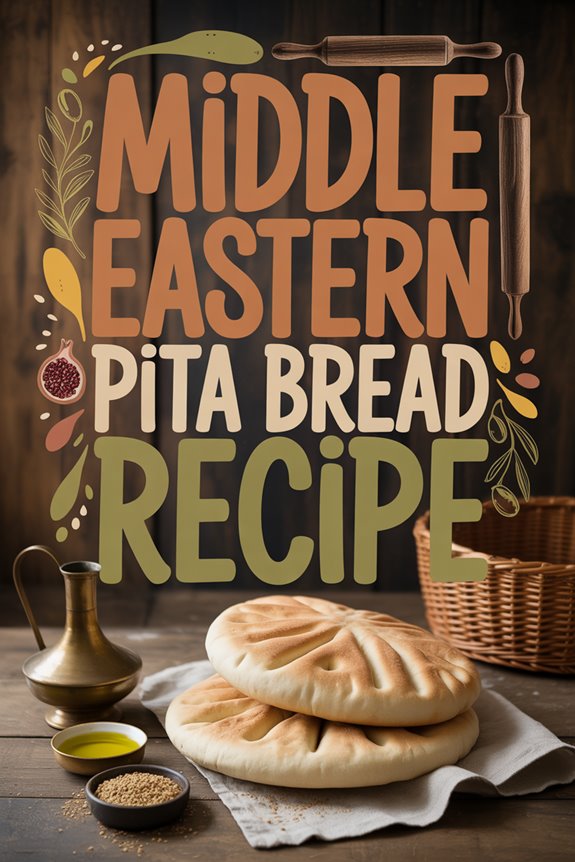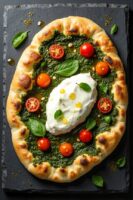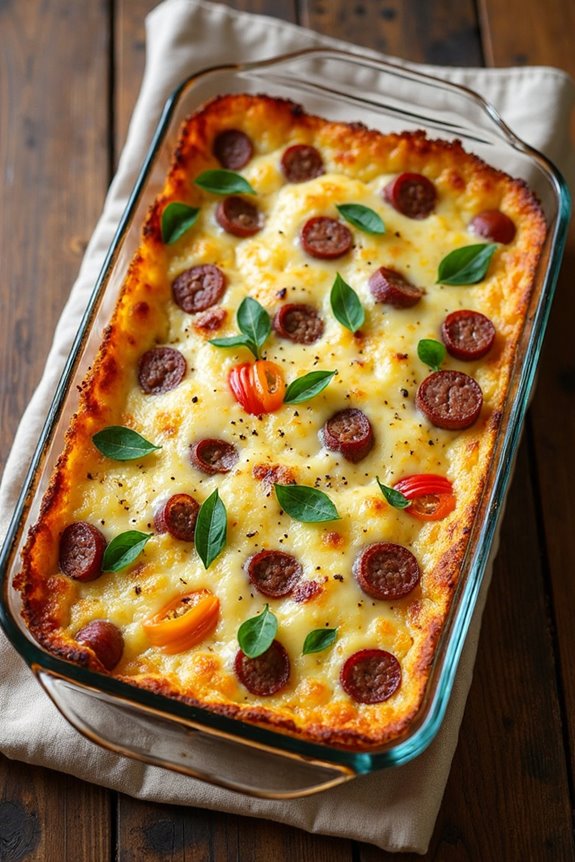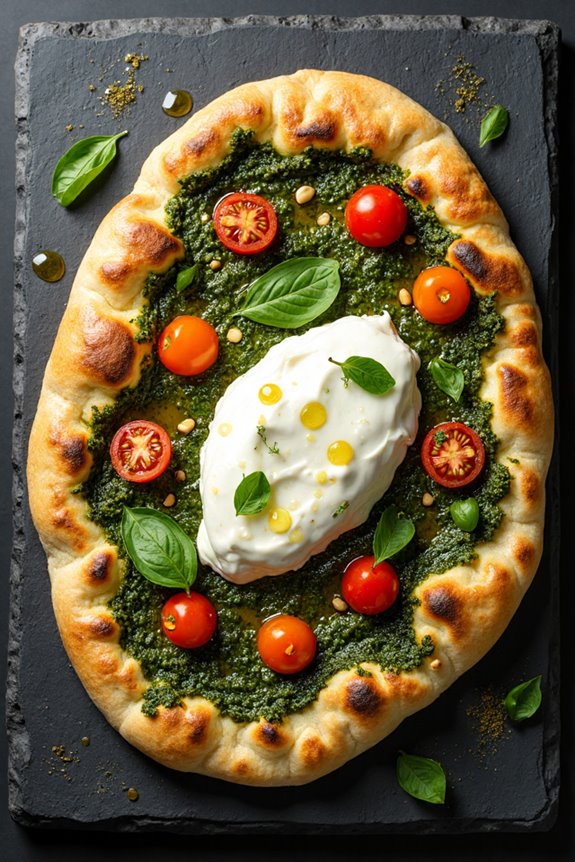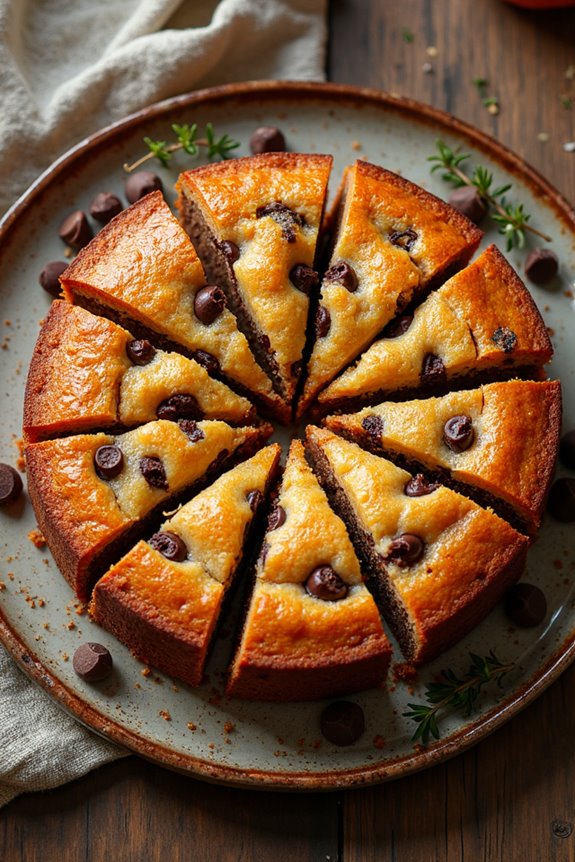Links below are affiliate links. We earn a commission on purchases at no extra cost to you.
Middle Eastern Pita Bread Recipe
Master the art of making soft, pillowy Middle Eastern pita bread at home—discover the secret to its perfect pocket and irresistible texture today.
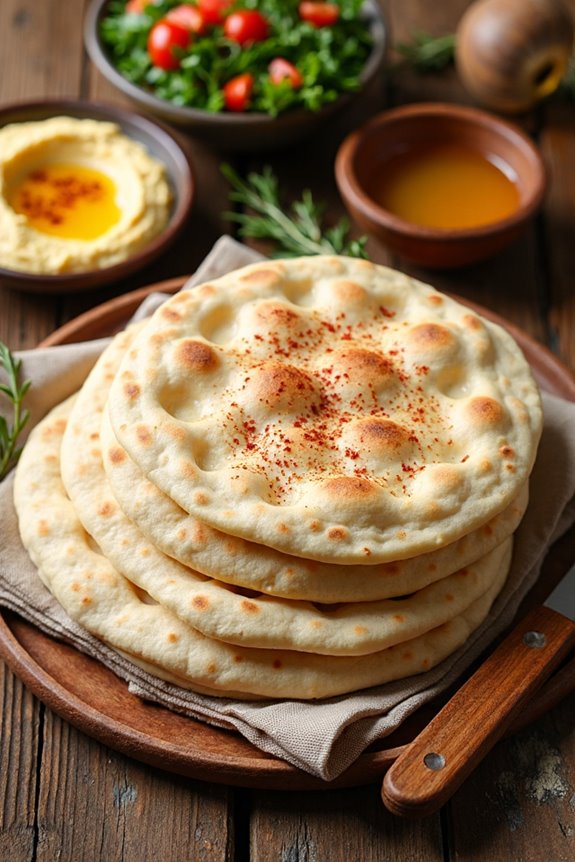
Why You’ll Love this Middle Eastern Pita Bread
Although pita bread might seem like just another flatbread, you’ll quickly realize it’s a total game-changer once you get a taste of its soft, pillowy texture and that magical pocket inside.
Seriously, who doesn’t love a bread that doubles as its own sandwich? It’s perfect for stuffing with all sorts of fillings—imagine falafel, fresh veggies, or even just hummus.
Plus, it’s surprisingly easy to make at home, which means no more disappointing store-bought versions that taste like cardboard.
The warm, slightly chewy texture is comforting, and that pocket? Pure genius.
It’s like bread with a secret. Honestly, once you try this Middle Eastern pita, you might start wondering how you lived without it.
Ready to impress your taste buds and dinner guests? You’re in for a treat.
What Ingredients are in Middle Eastern Pita Bread?
Alright, so before diving into the fun part of making pita bread, let’s get to know the stars of the show — the ingredients. You don’t need a pantry full of exotic spices or anything fancy. In fact, this recipe keeps it simple and straightforward, just like your favorite classic flatbread should be.
The magic happens when these humble ingredients come together, turning into that soft, pillowy bread with the perfect pocket inside. Ready to meet the crew?
- 1 (4 ounce) package dried yeast
- 1 teaspoon sugar
- 3 1/2 cups plain flour
- 2 tablespoons olive oil
- 1 1/2 cups lukewarm water
Now, these ingredients might sound basic, but each one plays a key role. The yeast and sugar team up to create that frothy rise, which is essential for the pita’s puffiness.
Plain flour keeps things neutral, letting the bread’s natural flavor shine without overpowering it. Olive oil adds just the right touch of richness and helps with that tender crumb.
And lukewarm water? It’s like the Goldilocks of liquids — not too hot to kill the yeast, not too cold to slow it down. Just right for a perfect dough that’s easy to work with.
If you stick to these ingredients and their roles, you’re already halfway to pita perfection.
How to Make this Middle Eastern Pita Bread

Making pita bread at home might sound fancy, but it’s really just about mixing the right ingredients and letting a little magic happen. Start by taking 1 (4 ounce) package of dried yeast and stirring it into 1 1/2 cups of lukewarm water along with 1 teaspoon of sugar. Give it a good mix and then set it aside in a warm spot for about 10 minutes.
If your yeast is still lively, you’ll see bubbles and a frothy surface—kind of like a tiny, bubbly party is happening in your bowl. If nothing’s bubbling, well, that yeast has probably checked out early, and you’ll need to try again. No shame in that; yeast can be temperamental.
Once the yeast mixture looks lively, it’s time to bring in 3 1/2 cups of plain flour and 2 tablespoons of olive oil. You can toss all these ingredients into a food processor and give it a quick 30-second whirl until the dough forms a ball—easy-peasy.
Or, if you’re feeling more old-school, mix it by hand or with a wooden spoon until it turns into a smooth dough. Then, turn the dough out onto a floured surface and knead it until it’s smooth and elastic. Don’t rush this part; kneading is where the dough gets its personality.
After that, pop the dough into a well-oiled bowl, cover it with plastic wrap and a tea towel, and let it rest in a warm place for about 20 minutes, or until it nearly doubles in size. It’s like the dough’s little nap before the big show.
After the dough has risen, punch it down (gently, no need to be a dough bully), then divide it into rounds about 2 inches thick. Lay these on greased baking trays, brush them with water, and let them rise again for another 20 minutes.
Right before baking, preheat your oven to a blazing 500°F—yes, really hot, because that’s what makes the pita puff up perfectly. If the dough looks dry, give it another quick water brush, then slide it into the oven for just 4 to 5 minutes.
The result? Soft, pale, slightly swollen pita pockets that are hollow inside—perfect for stuffing with your favorite fillings. Serve them warm, and you’re in pita heaven. Using a premium Mediterranean cookware set can enhance your baking experience and bring authentic flavors to your kitchen.
Middle Eastern Pita Bread Substitutions and Variations
Once you’ve mastered that perfect puff of pita bread, you might start wondering how to shake things up a bit.
Why not swap plain flour for whole wheat or spelt? It adds a nutty flavor and makes your pitas a bit heartier.
If you’re watching gluten, try a gluten-free blend—just expect a different texture, a little less puff, but still tasty.
Olive oil is classic, but experimenting with avocado or grapeseed oil can add a subtle twist.
For a fun variation, mix in herbs like za’atar or a pinch of cinnamon right into the dough. It’s like a flavor surprise with every bite.
And yes, brushing with yogurt instead of water before baking? That gives a lovely tang and a golden crust.
Who said pita had to be boring?
What to Serve with Middle Eastern Pita Bread
Wondering what pairs perfectly with soft, warm Middle Eastern pita bread? Well, think creamy hummus first—smooth, garlicky, a total classic.
Don’t stop there; baba ganoush with its smoky eggplant charm is a must-try. If you’re feeling adventurous, toss some tabbouleh on the side—a fresh, herby salad that cuts through the bread’s richness.
Got some falafel? Stuff those crispy, spiced balls right into the pita pocket for a handheld feast.
And hey, tzatziki sauce—cool, tangy, made with yogurt and cucumber—is a game changer.
Oh, and grilled veggies or marinated meats? Perfect for stuffing or dipping.
Honestly, pita bread’s like a blank canvas craving bold, vibrant flavors—so don’t hold back.
Just remember, if your dips don’t vanish quickly, you’re probably doing it wrong.
Final Thoughts
There’s something satisfying about pulling soft, warm pita bread from the oven—almost like holding a little pocket of potential in your hands.
It’s not just bread; it’s a blank canvas begging for hummus, falafel, or even a quick swipe of butter. The magic lies in that perfect puff, that hollow center, which means you nailed the yeast and heat just right.
Don’t rush the rise, though—patience pays off with that ideal texture. And yes, brushing the dough with water before baking? Totally worth it for that slight sheen and softness.
If your kitchen’s too chilly, try a warm spot or even the oven’s light to coax the dough along. Trust me, once you get this right, store-bought pita feels like a distant memory.

